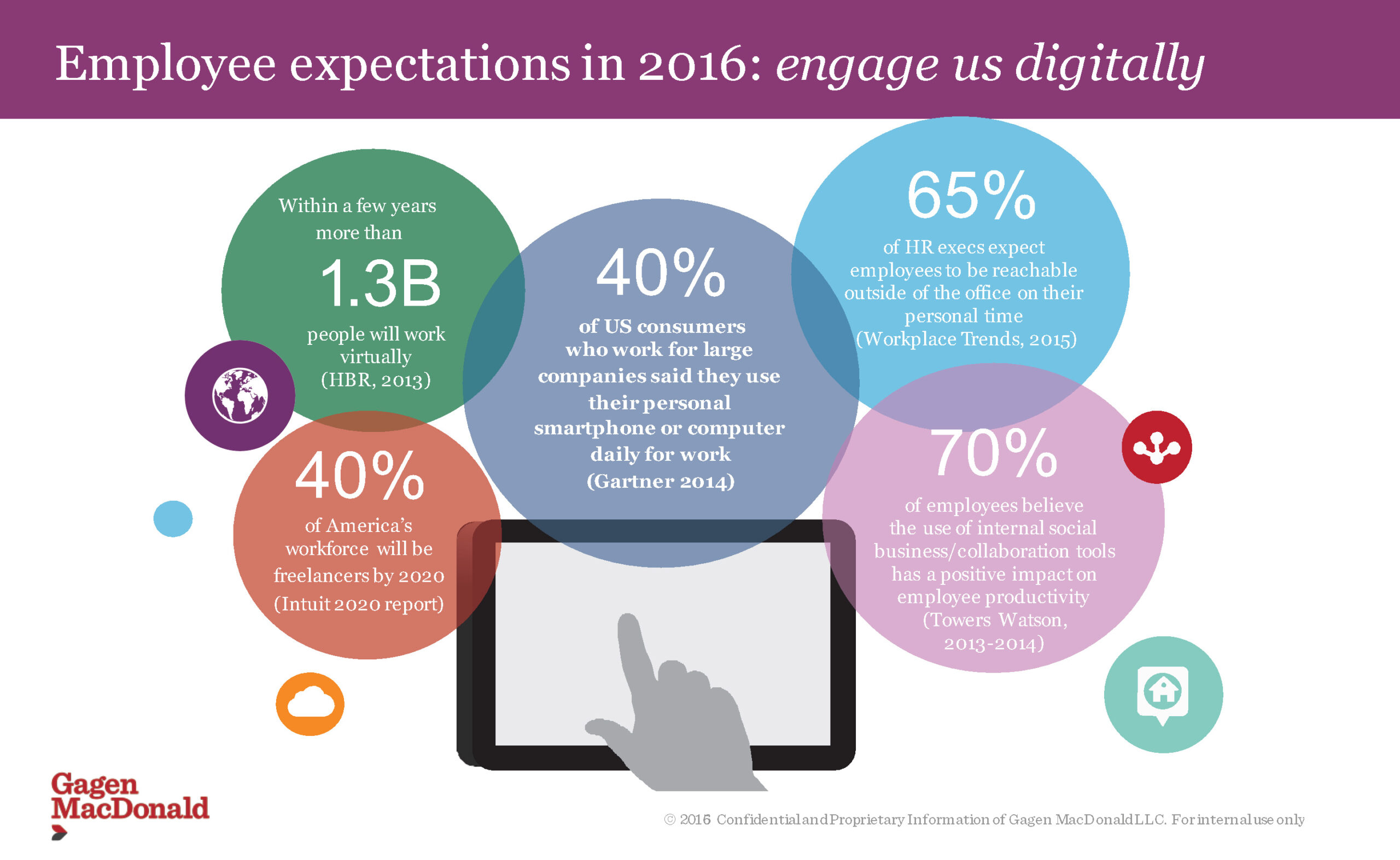It’s no secret that senior leaders rely on skilled communicators to drive better business results. Chief Communication Officers (CCOs) and their teams routinely tackle projects focused on evolving culture, integrating acquisitions and managing organizational change. They’re stepping up as strategic advisors, business drivers, social media leaders, storytellers, curators of corporate character and much more.So what are the highest priorities top CCOs are being asked to address? Equally important, how are communication professionals engaging a transformed employee population—one that’s increasingly global, mobile and multi-generational?These questions spark great conversations when I meet with CCOs. Reflecting on answers I’ve heard in recent months from our clients and within the broader professional community, this post captures 4 key priorities shaping the future of internal communications. Engaging employees digitally in internal communications campaigns is key. Graphic by Gagen MacDonald.[/caption]As you assess your mid-2016 progress, ask yourself: How are you and your team keeping pace with these 4 priorities? What’s working and what could be better? How can you have even more impact in the second half of the year to double-down on your efforts to help your company deliver business results?
Engaging employees digitally in internal communications campaigns is key. Graphic by Gagen MacDonald.[/caption]As you assess your mid-2016 progress, ask yourself: How are you and your team keeping pace with these 4 priorities? What’s working and what could be better? How can you have even more impact in the second half of the year to double-down on your efforts to help your company deliver business results?
- Accelerate a culture’s evolution to engage today’s stakeholders.
- Create an inspiring company story, and equip leaders at all levels to tell it.
- Articulate, design & activate an employee value proposition that’s unique to your organization.
- Engage employees digitally.
 Engaging employees digitally in internal communications campaigns is key. Graphic by Gagen MacDonald.[/caption]As you assess your mid-2016 progress, ask yourself: How are you and your team keeping pace with these 4 priorities? What’s working and what could be better? How can you have even more impact in the second half of the year to double-down on your efforts to help your company deliver business results?
Engaging employees digitally in internal communications campaigns is key. Graphic by Gagen MacDonald.[/caption]As you assess your mid-2016 progress, ask yourself: How are you and your team keeping pace with these 4 priorities? What’s working and what could be better? How can you have even more impact in the second half of the year to double-down on your efforts to help your company deliver business results?
/ Jun 08, 2016
